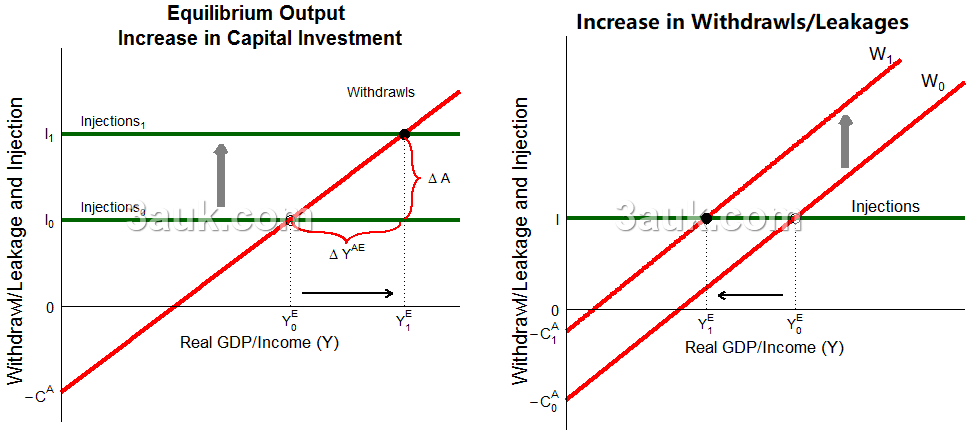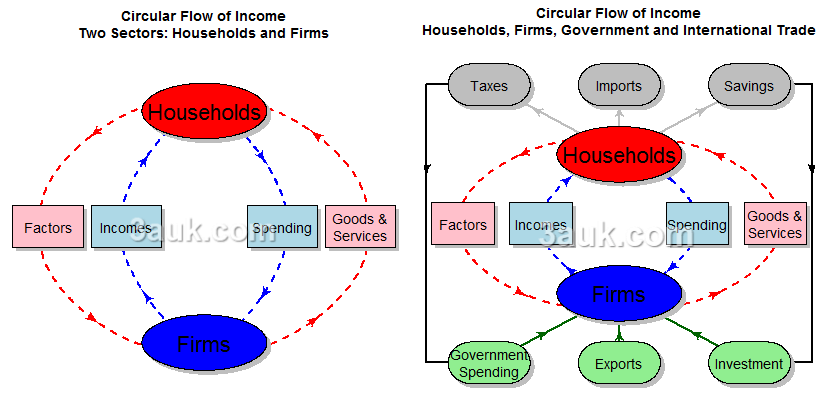Content
injections and leakages (multiplier not required)
- Injections: an addition to the circular flow
- investment spending,
- government spending,
- exports
- Withdrawals/Leakages: a leakage (deduction) from the circular flow of income
- saving,
- direct taxes,
- imports
- In the long run, links can occur between changes in injections and leakages.
- For example, a rise in investment leads to an increase in income. As people become wealthier, they have a tendency to save more, which provides funding for additional investment.
- An increase in government spending may result in an increase in tax revenue due to higher income levels.
- A rise in exports also boosts income levels. As income grows, people tend to spend more not only on domestically produced goods, but also on imported products.
equilibrium and disequilibrium (marginal and average propensities not required)

- Equilibrium income is the level of income where the flow of spending in the economy is sufficient to purchase all the goods and services that are produced.
- At this level, injections equal withdrawals, and the economy is in balance.
- When the economy is at equilibrium income, there is no tendency for either economic expansion or contraction.
- Disequilibrium income occurs when injections and withdrawals are not in balance.
- If injections exceed withdrawals, the economy experiences an increase in aggregate demand and economic expansion. This results in a higher level of income than the equilibrium level.
- If withdrawals exceed injections, the economy experiences a decrease in aggregate demand and economic contraction, leading to a lower level of income than the equilibrium level.

- If the economy is at disequilibrium income, there is a tendency for it to move back towards the equilibrium income level.
- For example, if injections exceed withdrawals and the economy experiences an increase in aggregate demand, this will lead to an increase in prices, which will cause the withdrawals to increase and the injections to decrease. In this way, the economy will move back towards the equilibrium income level.
Join the conversation

